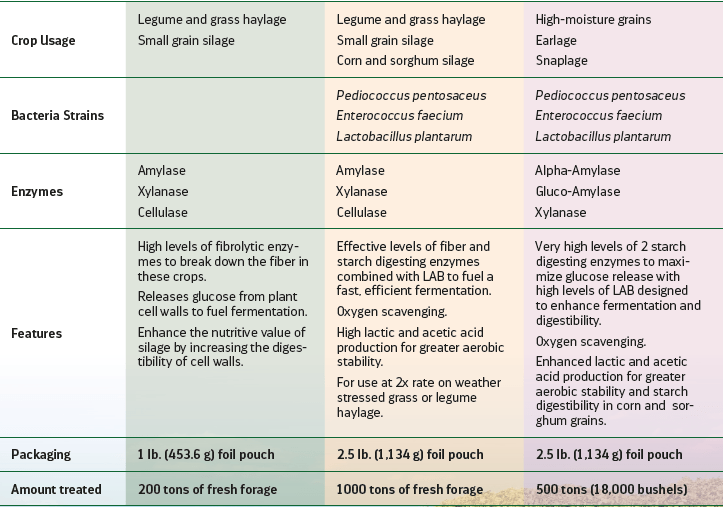Nutretain Forage Inoculant
Nutretain is a science-based forage preservation technology that synergistically combines multiple bacteria strains with high-activity enzymes to speed the fermentation process increasing lactic acid production while improving dry matter recovery and forage quality over a broad range of crops.
Additionally, Nutretain silage inoculants work as very effective preservatives. Nutretain treated silages produce moderate concentrations of acetic acid during fermentation; this is beneficial because acetic acid inhibits yeasts and molds, resulting in improved stability when silage is exposed to air.
In fact, silages with very low concentrations of acetic acid may be unstable upon feed-out (Kung et al., 201 8). When acetic acid from silages is consumed by ruminants, it can be absorbed from the rumen and used for energy or be incorporated into milk or body fat.
The goal of making silage is to produce a stable feed with a high recovery of dry matter, energy, and highly digestible nutrients compared with the fresh crop.
Mode of Action
Nutretain is designed with a dual-action technology. The combination of enzymes and live organisms act synergistically in a multi-step fashion for a superior biotransformation efficacy. First, the enzymes break down cellulose and starch molecules generating glucose that serves as fuel for the lactic acid-producing bacteria (LAB).
Subsequently, LAB convert that glucose into lactic and acetic acid. This combined effect rapidly drops the pH in the ensiled crop reducing up-front losses and prevents the growth of undesirable microbes like clostridia. The enzyme action and accelerated fermentation associated with it leads to less heating, more digestible forage, and greater nutrient retention. Hence the origin of Nutretain name.



